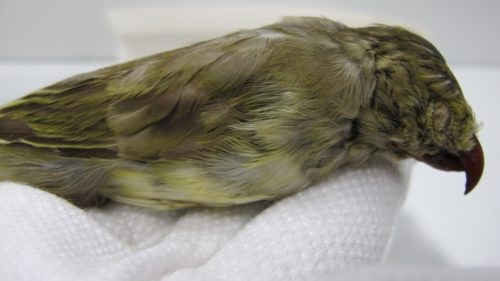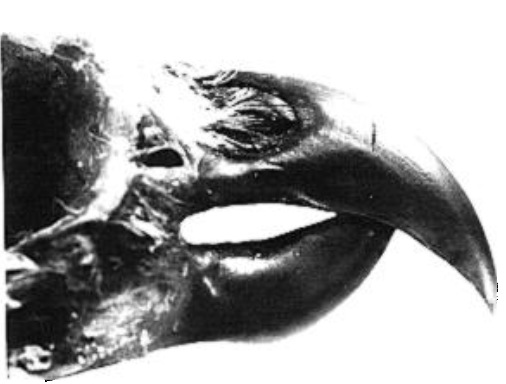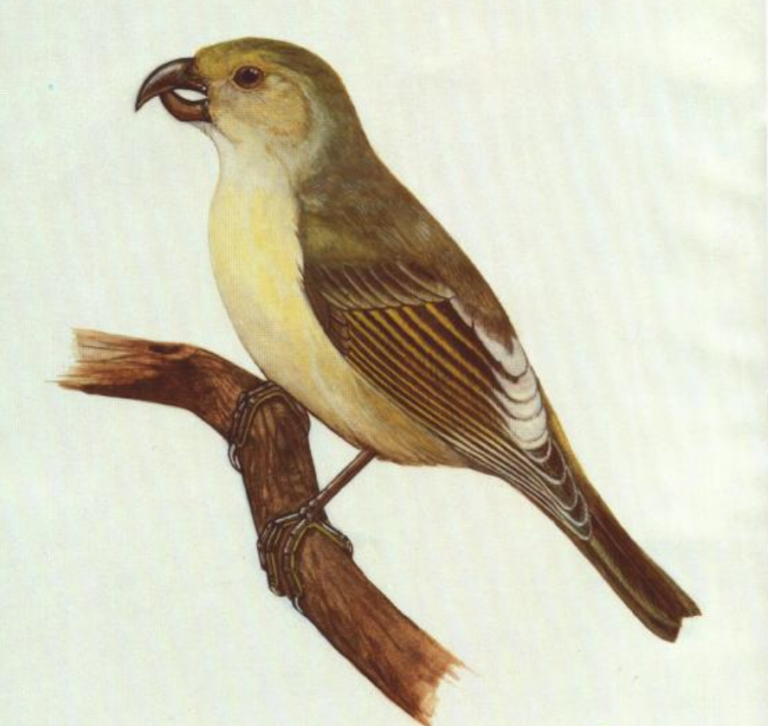Birdfinding.info ⇒ The Lanai Hookbill is known only from the field observations and collecting gun of George Munro, who observed it in 1913, 1916, and 1918 in the Kaiholena Valley of Lanai. He collected the only described specimen on February 22, 1913, and reported details of nonlethal encounters on March 17, 1916, and August 12, 1918. During most of the 1900s, the validity of the species was contested, as the prevailing authorities concluded that the sole specimen was actually an O’u with a deformed bill, until a 1989 article (James et al.) argued convincingly that it was a valid species—which Munro’s detailed observations had quite clearly established decades earlier, if believed.
Lanai Hookbill †
Dysmorodrepanis munroi
Extinct. Formerly endemic to Lanai.
All observations of the species were in dry foothill forests that were remnants of extensive lowland forests that had been replaced by pineapple plantations.
Identification
A stocky honeycreeper with a peculiarly formed, reddish-brown bill, apparently adapted to a diet of tree-snails.
Both mandibles were strongly curved toward each other, as in a pair of forceps, but the upper was somewhat longer than the lower.
The typical plumages are not fully known. The only specimen, thought to be a female, was mostly olive above, and mottled with yellow, white, and gray below.

Lanai Hookbill, the type specimen, side view. (Bernice Pauahi Bishop Museum, Honolulu; collected February 22, 1913.) © Andrew Esposito

Lanai Hookbill, the type specimen, ventral view. (Bernice Pauahi Bishop Museum, Honolulu; collected February 22, 1913.) © Andrew Esposito

Lanai Hookbill, showing the positions of the mandible when the bill was fully closed. © James et al. 1989

Lanai Hookbill, the type specimen. (Bernice Pauahi Bishop Museum, Honolulu; collected February 22, 1913.) © Andrew Esposito
Notes
Monotypic species.
IUCN Red List Status: Extinct.
References
BirdLife International. 2017. Dysmorodrepanis munroi (amended version of 2016 assessment). The IUCN Red List of Threatened Species 2017: e.T22720738A111776369. https://dx.doi.org/10.2305/IUCN.UK.2017-1.RLTS.T22720738A111776369.en. (Accessed May 31, 2020.)
Esposito, A. 2020. Lana’i Hookbill: Rarest Hawaiian Museum specimen, https://www.birdwriter.com/lanai-hookbill-rarest-hawaiian-museum-specimen/. (Accessed May 31, 2020.)
Hume, J.P. 2017. Extinct Birds (Second Edition). Bloomsbury Publishing PLC, London.
James, H.F., R.L. Zusi, and S.L. Olson. 1989. Dysmorodrepanis munroi (Fringillidae: Drepanidini), a valid genus and species of Hawaiian Finch. Wilson Bulletin 101:159-179.
Pratt, H.D. 2005. The Hawaiian Honeycreepers: Drepanidinae. Oxford University Press.
Pyle, R.L., and P. Pyle. 2017. The Birds of the Hawaiian Islands: Occurrence, History, Distribution, and Status. Version 2 (January 1, 2017). http://hbs.bishopmuseum.org/birds/rlp-monograph/. B.P. Bishop Museum, Honolulu, Hawaii.
